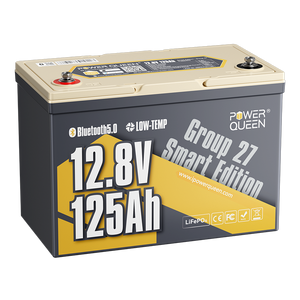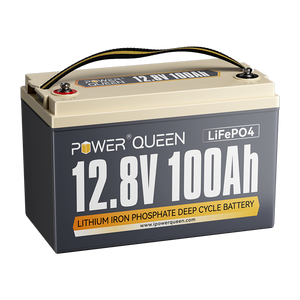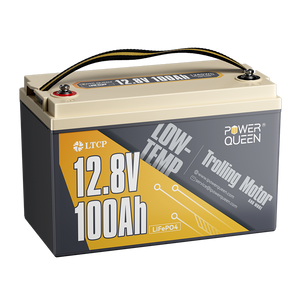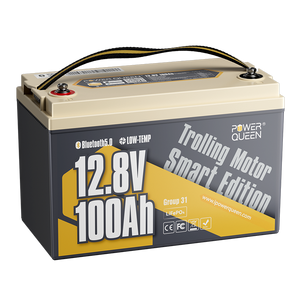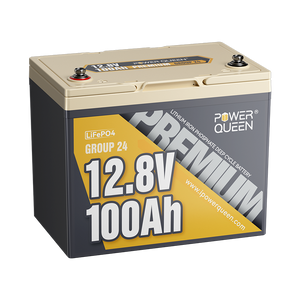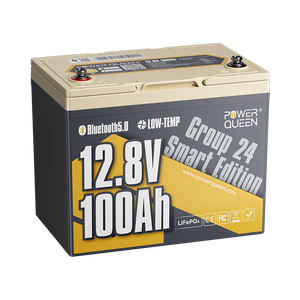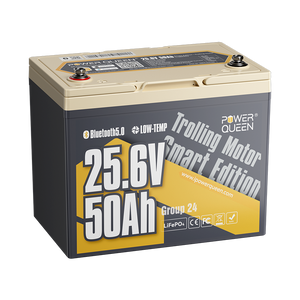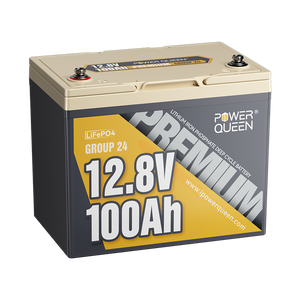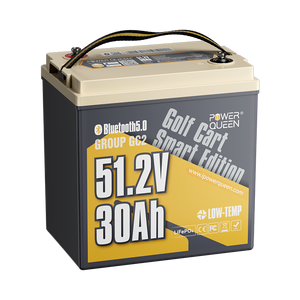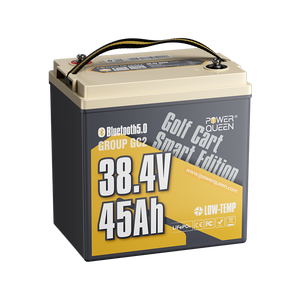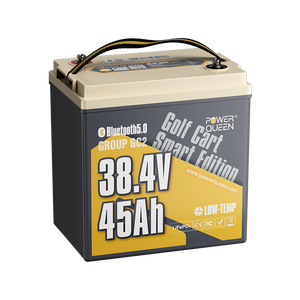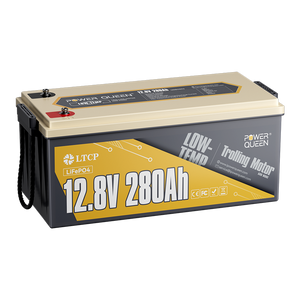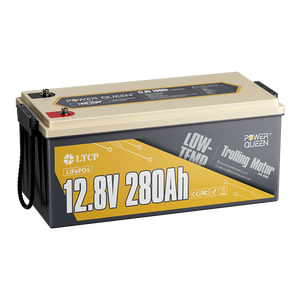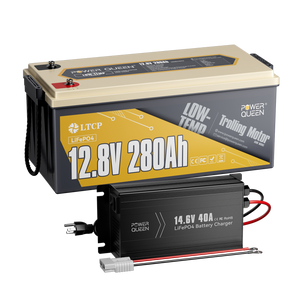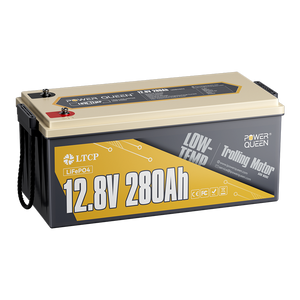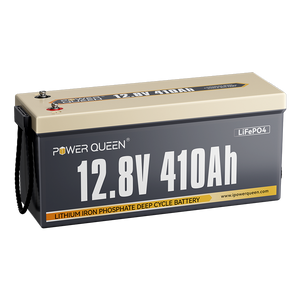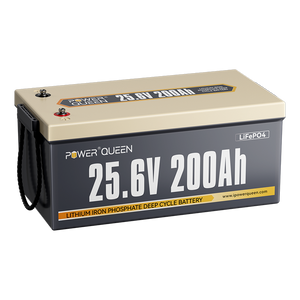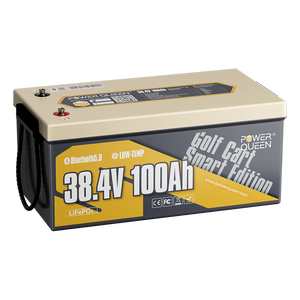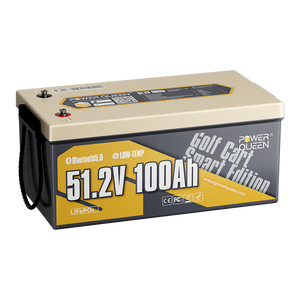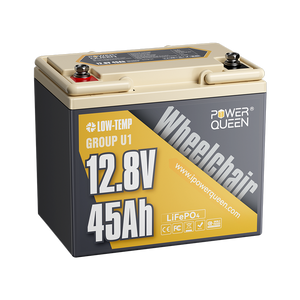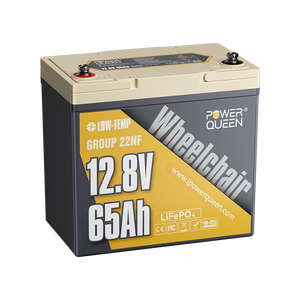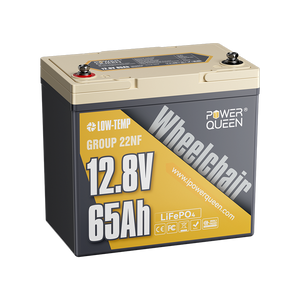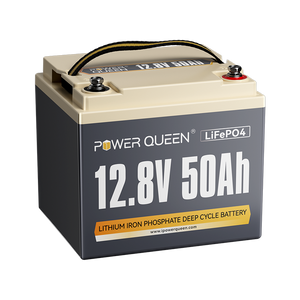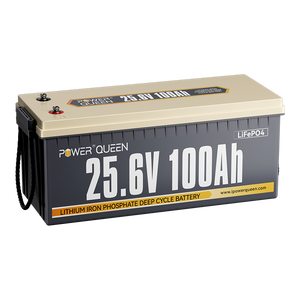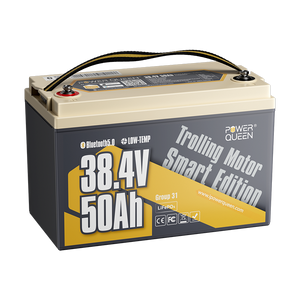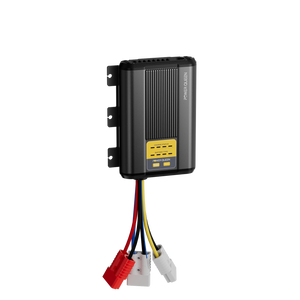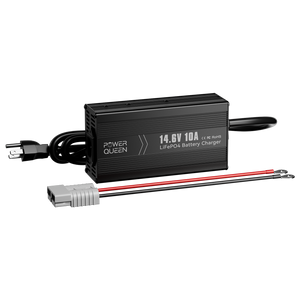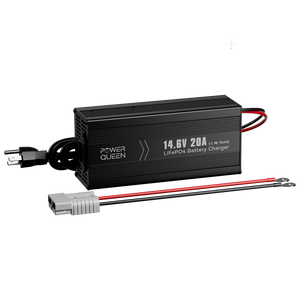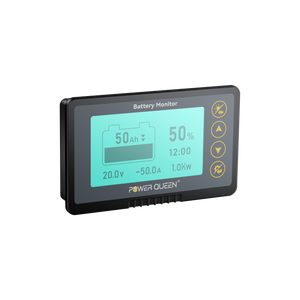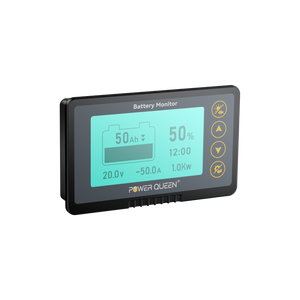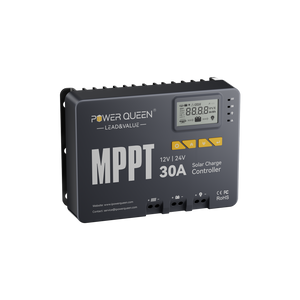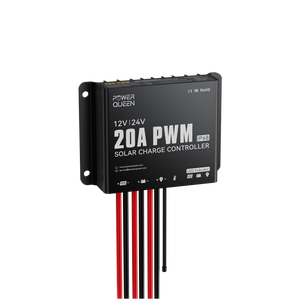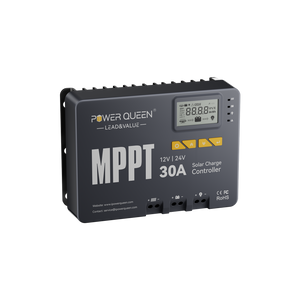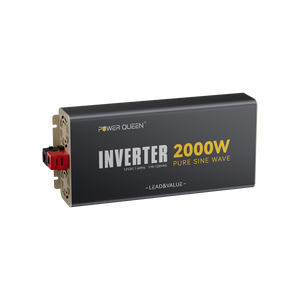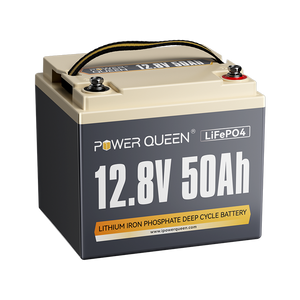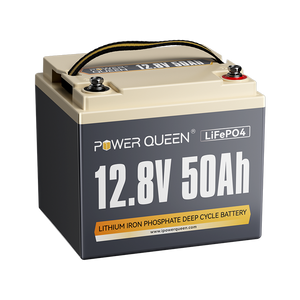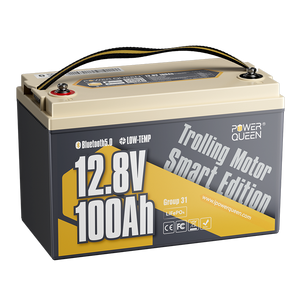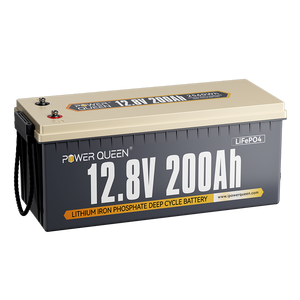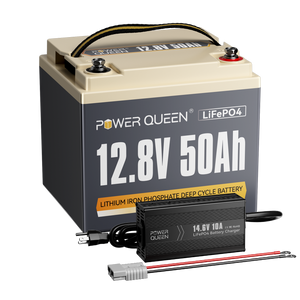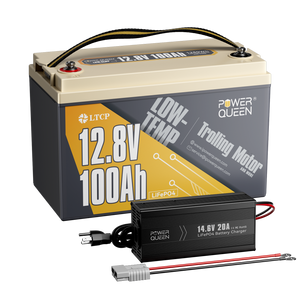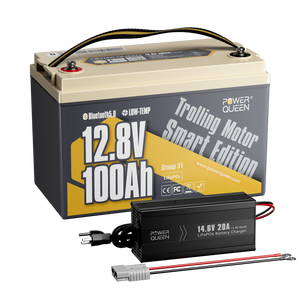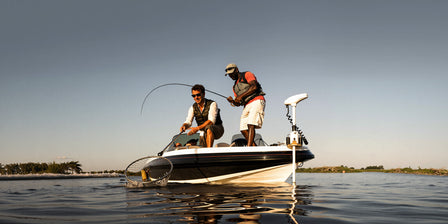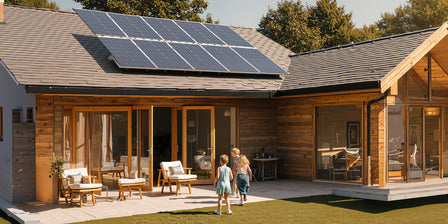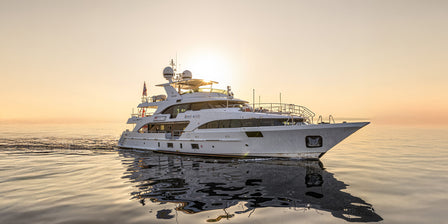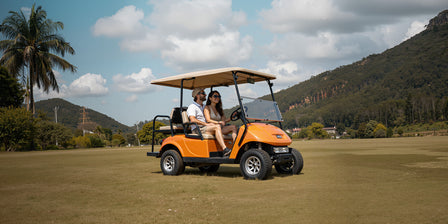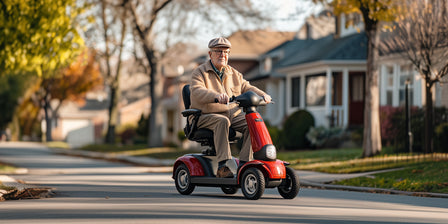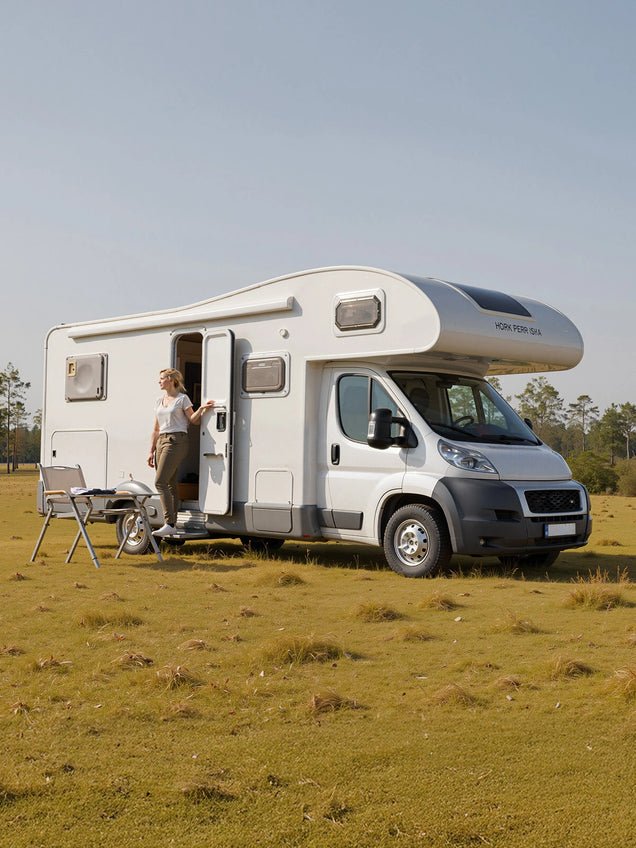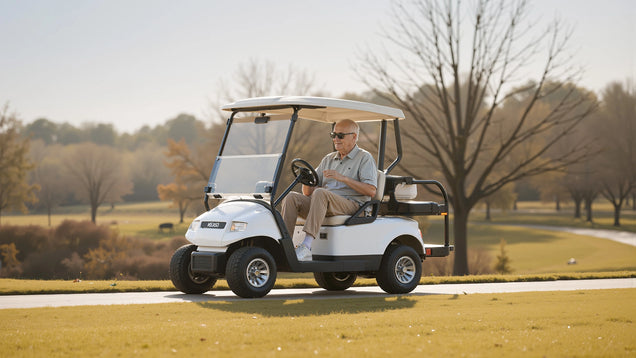[Newest] How To Charge Trolling Motor Battery
If you're inexperienced with trolling motors, you may be unsure about the proper way to maintain them. It's crucial to know the correct method of charging trolling motor batteries to avoid running out of power while on the water. Let's go through the process of charging your trolling motor battery and gain a better understanding of what a trolling motor is. Additionally, we'll briefly discuss various battery types such as AGM batteries, gel batteries, lithium batteries, etc.
Table of Content
- Part 1. What is A Trolling Motor
- Part 2. Types of Trolling Motor Batteries
- Part 3. Types of Trolling Motor Battery Chargers
- Part 4. Do I Need a Special Charger for a Marine Battery?
- Part 5. Charging Tips for Using the Marine Battery Charger
- Part 6. How Long Does it Take to Charge the Boat Battery?
- Part 7. How To Charge Trolling Motor Battery
- 7.1 Safety precautions
- 7.2 Disconnect the battery from the trolling motor
- 7.3 Determine the battery chemistry
- 7.4 Select an appropriate charger
- 7.5 Connect the charger
- 7.6 Set the charge rate
- 7.7 Start the charging process
- 7.8 Monitor the charging process
- 7.9 Charging completion
- Part 8. Can I Charge Marine Battery with Solar Panels?
- Part 9. How To Charge Trolling Motor Batteries in Cold Winter Day
- 9.1 Check the battery temperature
- 9.2 Choose a suitable charging method
- 9.3 Use a low-amperage trickle charge
- 9.4 Keep the battery warm during charging
- 9.5 Maintain proper ventilation
- 9.6 Monitor the charging process
- 9.7 Charge the battery fully
- Part 10. Different Types of Battery Chargers and Their Pros and Cons
- 10.1 Onboard Chargers
- 10.2 Portable Chargers
- 10.3 Solar Chargers
- 10.4 Smart Chargers
- 10.5 Wind-Powered Chargers
- 10.6 Inverter Chargers
- Part 11. Common Mistakes to Avoid When Charging Trolling Motor Batteries
- Part 12. FAQs about Trolling Motor Batteries
- Part 13. Upgrading Deep Cycle Marine Batteries to Lithium for Better Performance
- 13.1 LiFePO4 batteries are more efficient
- 13.2 LiFePO4 batteries last longer
- 13.3 LiFePO4 batteries are safer
- 13.4 LiFePO4 batteries are more reliable
- 13.5 LiFePO4 batteries are more convenient
- Part 14. Conclusion
Part 1. What is A Trolling Motor
A trolling motor is an electric motor specifically designed for use on small boats or kayaks to provide propulsion at slower speeds. Unlike the main engine of the boat, a trolling motor is quieter and operates more efficiently, allowing anglers to navigate through water silently, without scaring away fish. It is typically mounted on the bow or stern of the boat and can be controlled manually or remotely. Trolling motors are commonly used in fishing applications, as they offer precise maneuverability and enable anglers to maintain position in specific locations or troll at a desired speed.
Trolling motors typically operate on 12V or 24V systems. The specific working voltage depends on the setup of your boat and the motor you have.
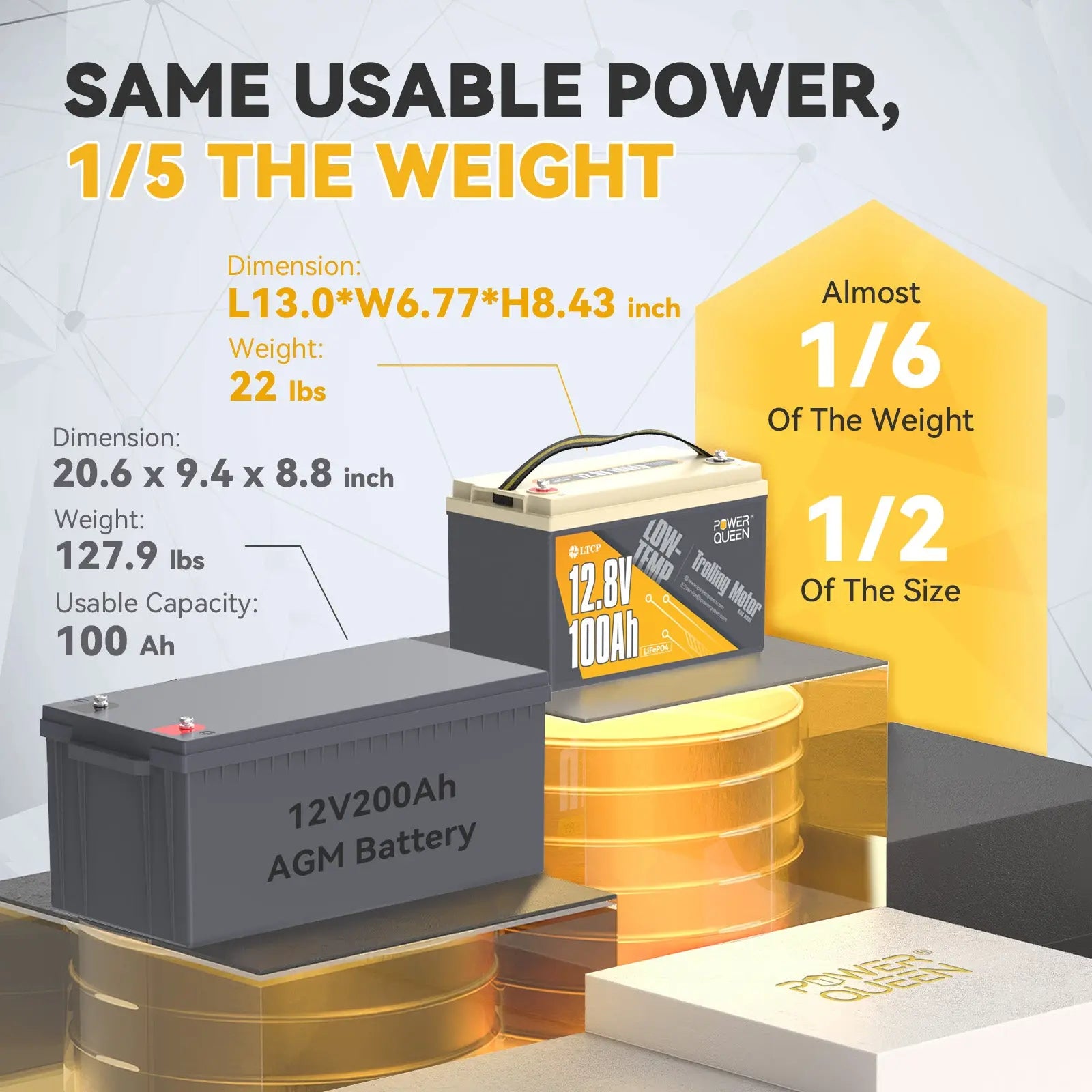
A 12V trolling motor is powered by a single 12V battery connected to the motor. These motors are suitable for smaller boats and are generally more affordable and easily accessible. They offer sufficient power for most fishing needs but might not be as powerful or have as much thrust as a 24V motor.
A 24V trolling motor operates with two 12V batteries connected in series, which effectively doubles the voltage to provide more power. This setup is typically used for larger boats or when more thrust is needed, such as in rough conditions or stronger currents. 24V motors are generally more expensive but offer increased performance and longer battery life.
Part 2. Types of Trolling Motor Batteries
Choosing the right battery for your trolling motor depends on your specific usage needs. Let's explore the different types available:
2.1 AGM Batteries
AGM (Absorbed Glass Mat) batteries are sealed lead acid batteries with a fiberglass mat suspending the electrolyte. They are maintenance-free and highly durable, making them suitable for rough conditions on boats or RVs. AGM batteries can be mounted in various positions and are spill-proof. However, they are generally more expensive and may have a shorter lifespan compared to well-maintained wet cell batteries.
2.2 Wet Cell Batteries
Wet cell batteries are flooded lead acid batteries that require the electrolyte compound to be filled to the appropriate level. They must be mounted upright to prevent leakage. While maintenance is required to periodically add distilled water, wet cell batteries are more affordable. They offer a cost-effective option for those willing to manage maintenance tasks.
2.3 Gel Batteries
Gel batteries are similar to AGM batteries, but instead of a glass mat, they contain gel. They excel in higher temperature environments and can withstand hot, sunny climates. However, they may not charge as efficiently as AGM batteries. Gel batteries are compatible with solar setups, making them a suitable choice for boating in sunny areas.
2.4 Lithium Batteries
Lithium batteries are becoming more popular in the boating and fishing industry due to their numerous advantages over traditional lead-acid batteries. Lithium batteries are lighter, have a longer lifespan, and can provide consistent power output throughout their discharge cycle. They also have a higher energy density, allowing for more power in a smaller package. However, it's important to note that lithium batteries are typically more expensive than other types of batteries. Power Queen provides you grade-A cell high quality LiFePO4 batteries with cost-effect price!
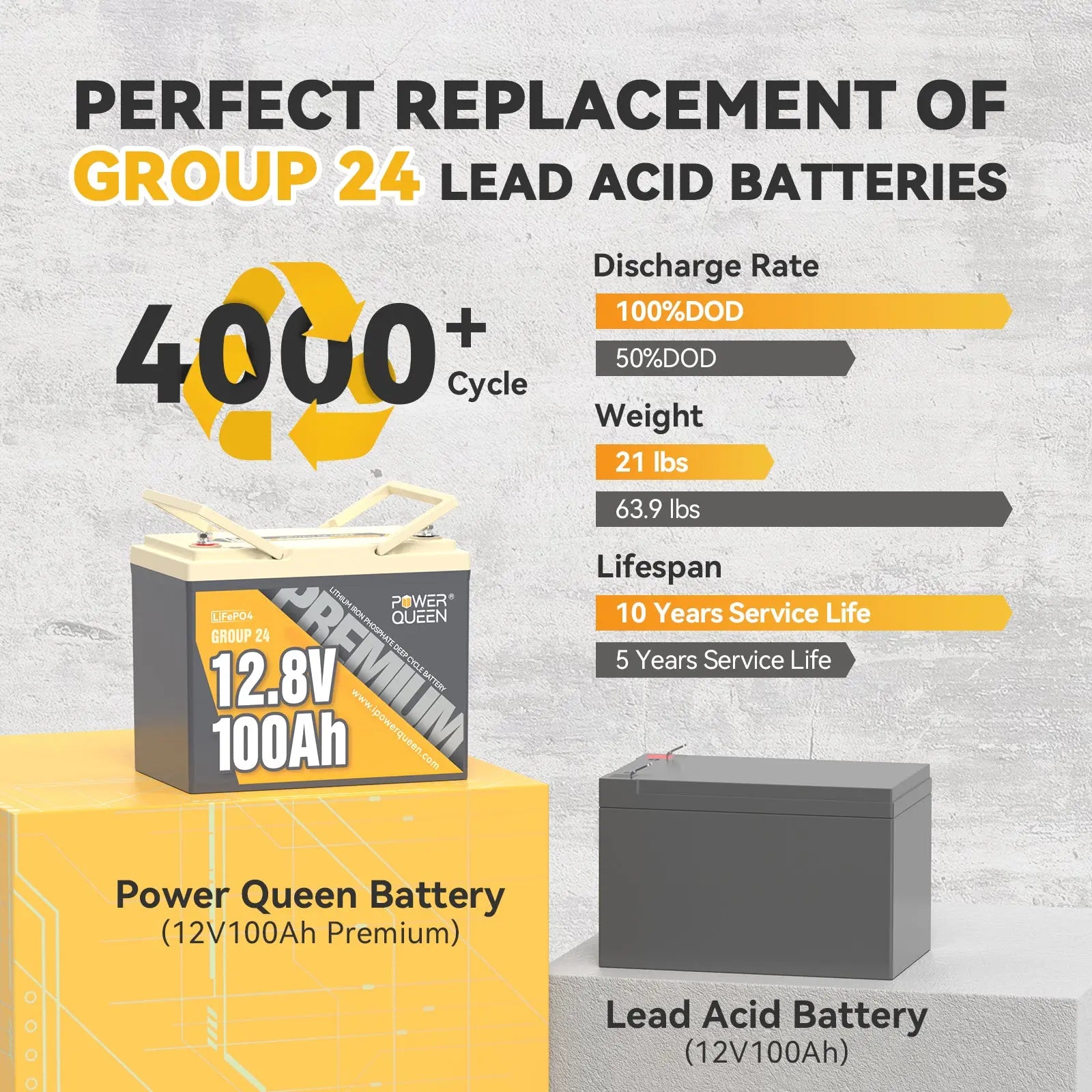
Part 3. Types of Trolling Motor Battery Chargers
There are different types of trolling motor battery chargers available on the market. Here are a few common types:
- Manual/Traditional Chargers: These are basic chargers that require you to manually monitor the charging process. They typically have a dial or a switch to adjust the charging voltage and amperage.
- Onboard Chargers: These chargers are permanently installed on the boat and can charge multiple batteries simultaneously. They are designed for convenience, as you can simply plug in your boat when it's not in use, and it will automatically charge the batteries.
- Portable Chargers: These are compact and portable chargers that you can take with you and connect to your trolling motor battery wherever you have access to power. They are convenient for charging batteries away from the boat or when you're traveling.
- Smart Chargers: Also known as microprocessor-controlled chargers, these chargers monitor the battery's condition and adjust the charging voltage and amperage accordingly. They are designed to provide a more efficient and safe charging process while prolonging the battery's lifespan.
Part 4. Do I Need a Special Charger for a Marine Battery?
When it comes to charging marine batteries, it is important to use a charger that matches the battery's requirements. This means considering the manufacturer-defined voltage and amperage for effective and safe charging. Using a charger with lower specs than required can result in a slow charge and overheating of the charger, while using a charger with higher specs can potentially damage the battery.
For lithium batteries, it is especially crucial to use a special charger that is designed to provide a steady power supply. Following the instructions provided in the boat's battery manual is highly recommended to ensure proper charging. Below is the format that voltage suggestion to charge lithium batteries.

Part 5. Charging Tips for Using the Marine Battery Charger
1. How to charge the lead acid/ lithium marine batteries
To ensure proper charging for lead-acid gel or AGM batteries, it is important to use a marine battery charger specifically designed for these battery types. These chargers provide a steady and controlled power flow to facilitate the charging process, allowing electrons to migrate effectively. Smart chargers, which can manage the entire charging operation, are particularly beneficial as they help enhance the battery's lifespan. They are capable of maintaining and controlling temperature during charging, preventing any potential damage caused by overheating.
Suggest reading: How To Charge LiFePO4 lithium battery
On the other hand, lithium-ion batteries have their own dedicated chargers. These batteries have higher capacities compared to lead-acid batteries, and their charging requirements differ accordingly. For lithium-ion batteries, a charger equipped with a battery management system (BMS) is necessary. The BMS regulates various aspects of the charging and discharging operations, including current flow, temperature, and other crucial information. By doing so, it protects the battery and prolongs its overall lifespan.
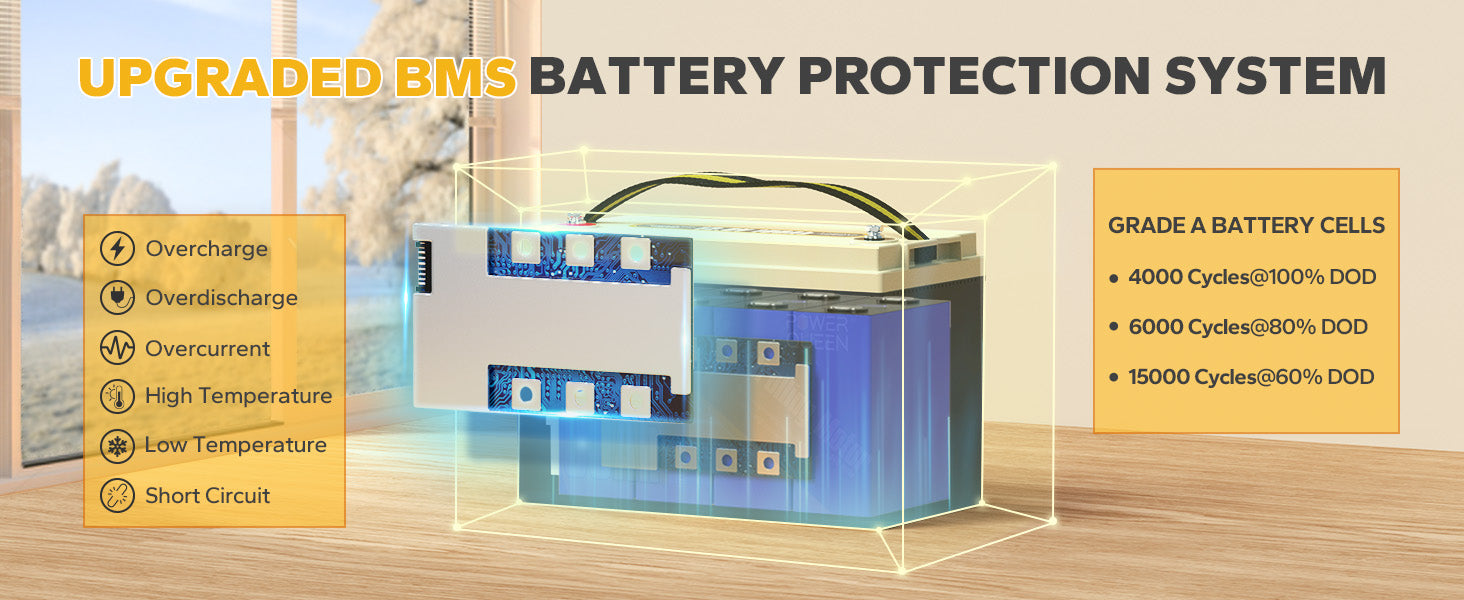
Charging a lithium-ion battery typically involves three stages: bulk, absorption, and float. Each stage has its own power specifications. During the bulk stage, the charger supplies the maximum safe current to the battery, allowing it to recharge quickly until it reaches around 80% capacity. At this point, the charger switches to the absorption stage, providing lower power to slow down the charging process. Finally, the float stage occurs when the battery is fully charged but still connected to the charger. The charger maintains a constant voltage and does not actively charge the battery, as overcharging protection is in place.
By understanding the specific charging requirements for different battery types and utilizing the appropriate chargers, users can ensure efficient and safe charging, leading to optimal performance and prolonged battery life.
Part 6. How Long Does it Take to Charge the Boat Battery?
The efficiency of charging marine batteries depends on various factors such as the specifications of the charger, the type of battery chemistry used, and other considerations. Marine batteries can be categorized into different types, with lead-acid and lithium-ion batteries being the most common. Each type of battery has its own unique charging specifications. In general, lithium-ion batteries have the advantage of being able to recharge at a faster rate compared to other battery types.
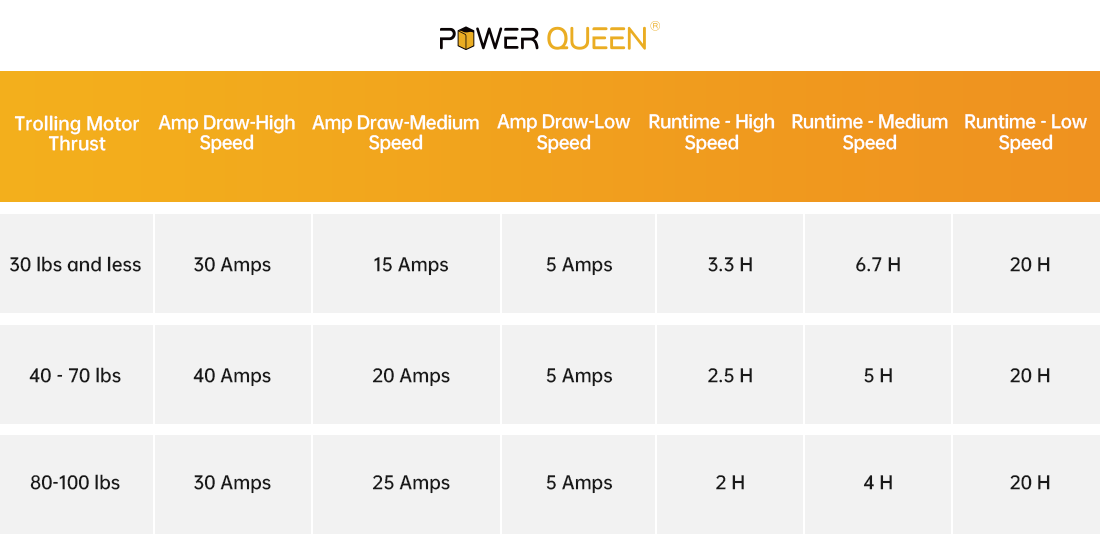
The amperage of the charger is an important factor to consider when aiming for effective and speedy charging. It is recommended to use a charger with an appropriate amperage for marine batteries. According to market information, the typical charging time for a marine battery charger ranges from 4 to 6 hours. However, utilizing fast chargers can significantly reduce this duration as they allow for a better flow of current through the discharged cells. In some cases, the charging time can be reduced to 2-3 hours or even less for lithium-ion batteries. Choosing an inappropriate charger may result in longer charging times, so it is essential to select one that suits the specific battery type.
Temperature and maintenance should also be taken into consideration as they can impact the charging time and overall battery performance. New and well-maintained batteries generally have better specifications and charging capabilities. Extreme temperatures, whether too high or too low, can disrupt the flow of electrons during the charging process and potentially cause issues.
By carefully considering the charger specifications, battery chemistry, temperature conditions, and regular maintenance, you can optimize the charging efficiency and prolong the lifespan of your marine batteries.
Part 7. How To Charge Trolling Motor Battery
To charge a trolling motor battery, you can follow these steps:
7.1 Safety precautions
Before you begin, make sure you are in a well-ventilated area with no open flames or sparks. Additionally, wear safety goggles and gloves.
7.2 Disconnect the battery from the trolling motor
Turn off the trolling motor and disconnect it from the battery terminals. It's important to avoid any accidental electrical discharge during the charging process.
7.3 Determine the battery chemistry
Check the label on your battery or consult the manufacturer's specifications to identify the battery chemistry (e.g., lead-acid, AGM, gel, or lithium-ion).
7.4 Select an appropriate charger
Choose a charger that is specifically designed for your battery chemistry. Different chemistries require different charge profiles to ensure efficient and safe charging.
7.5 Connect the charger
Connect the charger's positive (red) clamp to the positive terminal of the battery and the negative (black) clamp to the negative terminal. Ensure a secure connection, as loose connections can lead to ineffective charging.

Power Queen 12V Marine Battery Charger
7.6 Set the charge rate
Depending on your charger, you may have the option to adjust the charge rate. Refer to the charger's instructions or battery manufacturer's guidelines to select an appropriate charge rate. Generally, a lower charge rate is recommended for better battery health and longevity.
7.7 Start the charging process
Once the charger is connected and the settings are adjusted, you can start the charging process by turning on the charger. The charger will begin providing power to the battery.
7.8 Monitor the charging process
Keep a close eye on the charging process. Some chargers have built-in indicators to show the progress. It's important not to overcharge the battery, as it can lead to damage or reduced battery life.
7.9 Charging completion
The charging time will vary depending on factors such as the battery capacity and charge rate. Once the battery is fully charged, the charger may automatically switch to a maintenance or trickle charge mode. If your charger does not have this feature, disconnect the charger when the battery is fully charged.
Remember, it's essential to follow the manufacturer's instructions and guidelines specific to your battery and charger to ensure safe and effective charging.
Part 8. Can I Charge Marine Battery with Solar Panels?
Yes, you can charge marine batteries with solar panels. Solar panels can be a convenient and environmentally friendly way to recharge batteries, especially in remote or off-grid locations. To do this, you will need a solar panel, a solar charge controller, and the necessary cables and connectors.
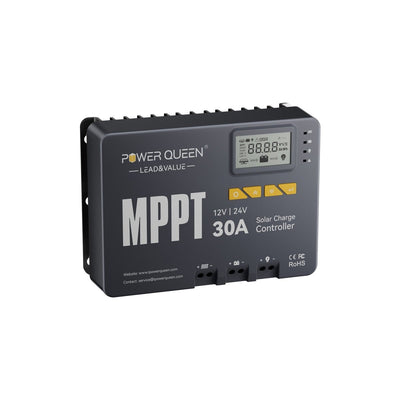

Here’s the steps to follow:
- (1) Connect the battery to the MPPT first;
- (2) Connect the DC load to the MPPT (optional, can be used or not)
- (3) Connect the solar panel to the MPPT
- (4) Communication port (optional, can be selected or not)
- (5) Remote temperature sensor (optional for lead-acid batteries)
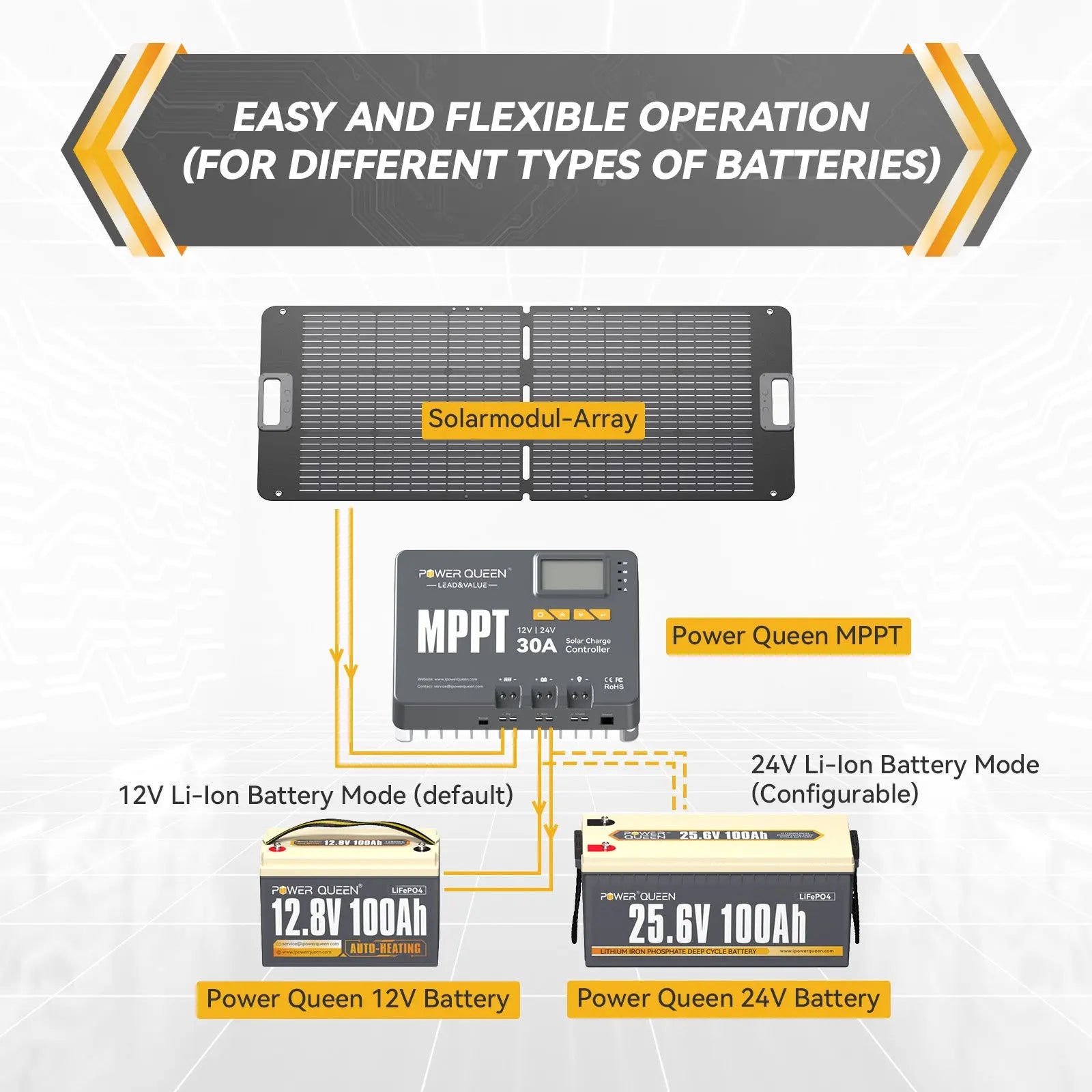
Part 9. How To Charge Trolling Motor Batteries in Cold Winter Day
In winter, we really suggest you upgrade the battery to a lithium battery with low-temperature protection features like the Power Queen 12V 100Ah LiFePO4 lithium battery could be an excellent option for winter use. With automatic cut-off charging below freezing temperatures, it helps to extend the battery's lifespan. Upgrading to a lithium battery would optimize the performance and reliability of your trolling motor setup during the colder months.
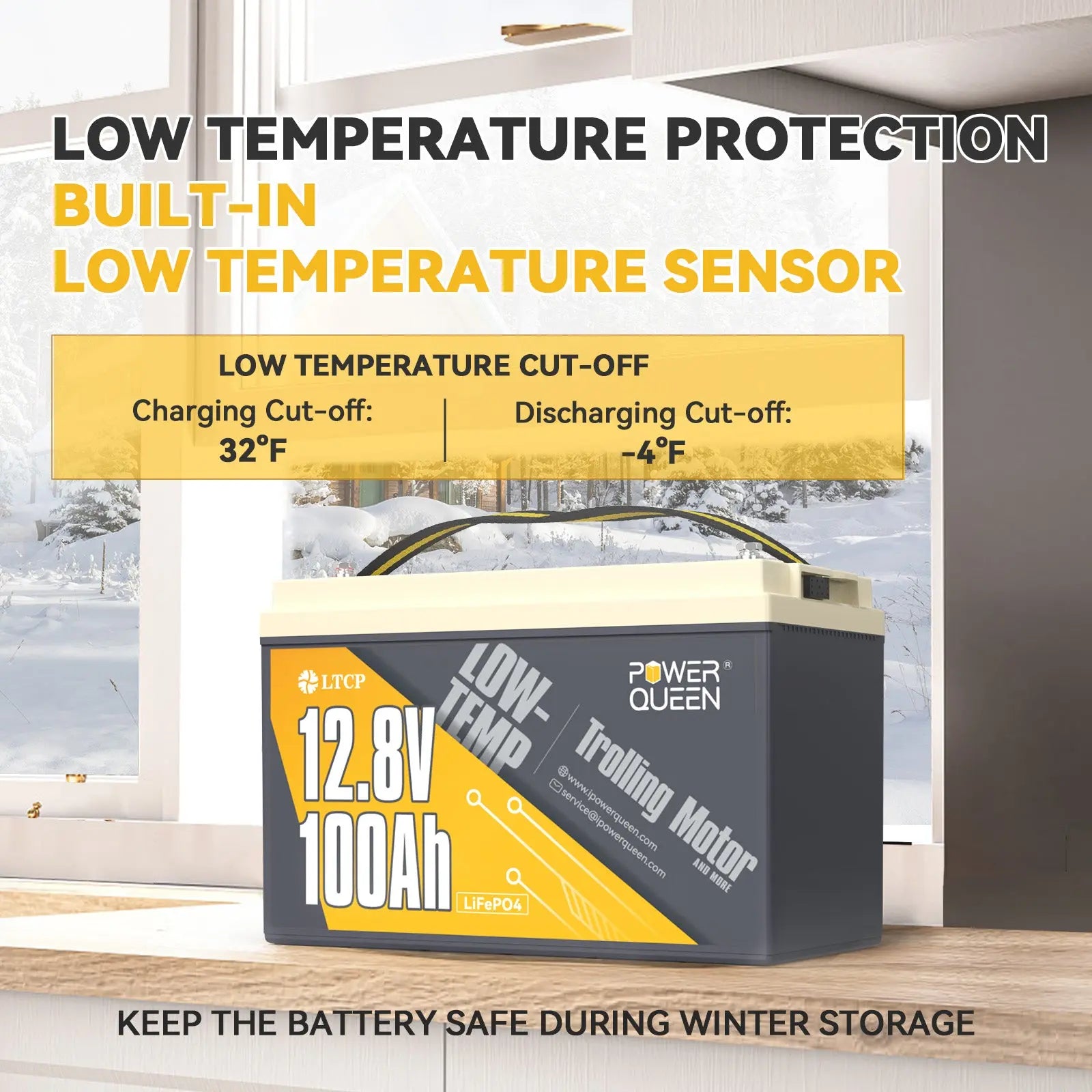
When charging trolling motor batteries in cold winter days, it's essential to take a few precautions to ensure their longevity and optimal performance. Here are some steps to follow:
9.1 Check the battery temperature
Before initiating the charging process, ensure that the battery temperature is above freezing. Charging a frozen battery can cause irreparable damage. If it's below freezing, bring the battery indoors and allow it to warm up before charging.
9.2 Choose a suitable charging method
For cold weather charging, using a smart or temperature-compensated charger is recommended. These chargers adjust the charging voltage based on the battery's temperature, optimizing the charging process.
9.3 Use a low-amperage trickle charge
Cold temperatures can affect battery capacity, so it's advisable to charge at a lower amperage for a longer duration. This slow charge helps the battery maintain its charge and prevent damage.
9.4 Keep the battery warm during charging
If possible, place the battery in a warmer environment while charging. This can be inside a garage or a well-insulated shed. Avoid exposing the battery to freezing temperatures during the charging process.
9.5 Maintain proper ventilation
Ensure that there is proper airflow around the battery during the charging process. This helps dissipate any heat generated during charging and prevents the buildup of potentially harmful gases.
9.6 Monitor the charging process
Regularly check the battery voltage and its state of charge during the charging process. This allows you to ensure that the battery is charging properly and prevents overcharging.
9.7 Charge the battery fully
During winter, it's even more important to charge the batteries fully. This helps maintain their capacity and prevents sulfation, which can occur if the battery is left partially charged for an extended period.
By following these steps, you can properly charge trolling motor batteries during cold winter days, ensuring their longevity and optimal performance.
Part 10. Different Types of Battery Chargers and Their Pros and Cons
There are several types of trolling motor battery chargers available on the market, each with its own advantages and disadvantages. Here are some of the most common types:
10.1 Onboard Chargers:
Pros: Onboard chargers are permanently installed on the boat and designed to charge multiple batteries simultaneously. They are convenient and typically have a waterproof construction.
Cons: Installation can be more complex, and they may be more expensive than portable chargers.
10.2 Portable Chargers:
Pros: Portable chargers are versatile, allowing you to charge marine deep cycle batteries both on and off the boat. They are generally more affordable and easy to use.
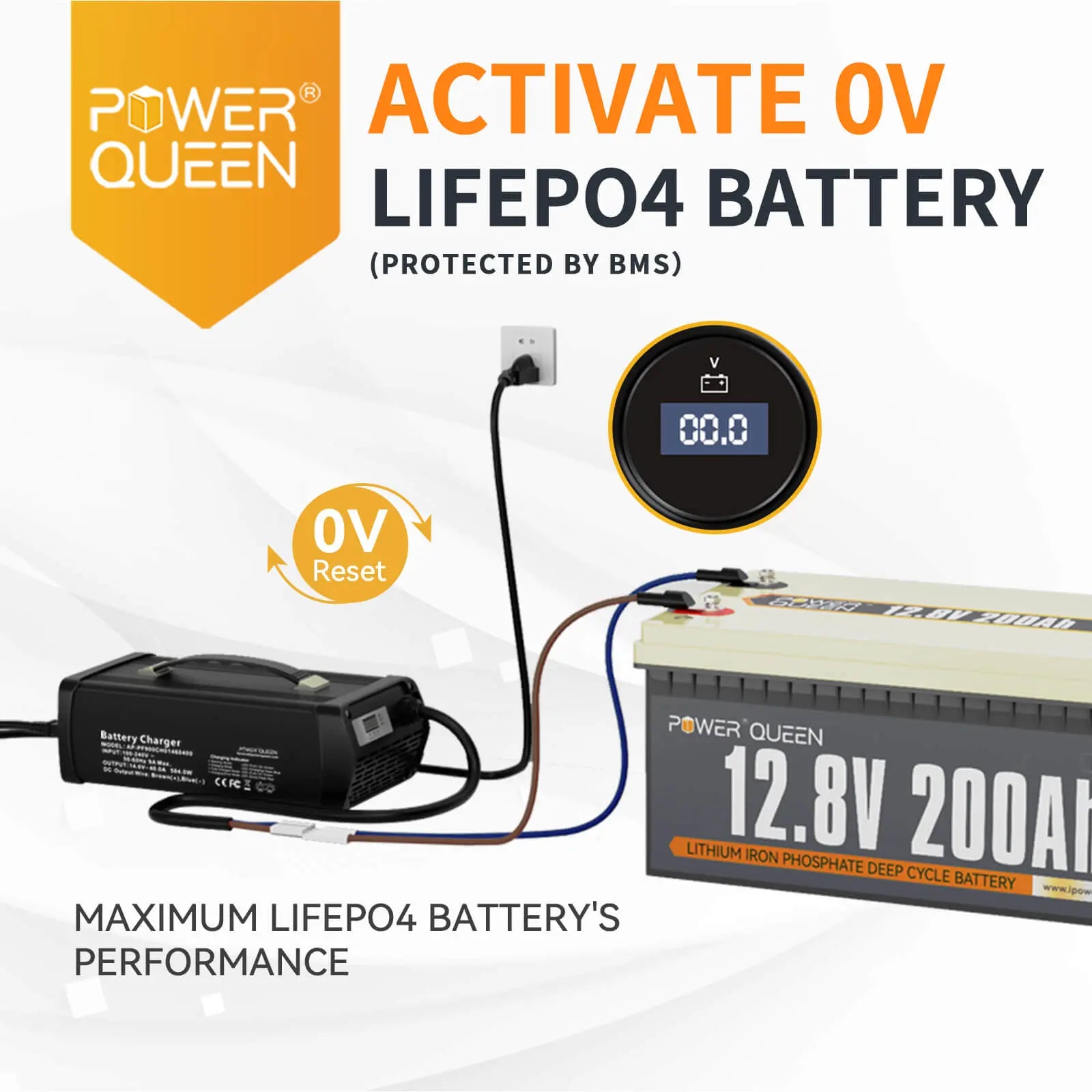
Cons: They may not have the same charging capacity as onboard chargers and can take up space on the boat when in use.
10.3 Solar Chargers:
Pros: Solar chargers use the sun's energy to charge batteries, making them environmentally friendly and perfect for boats with limited access to shore power.
Cons: They may charge more slowly than traditional chargers and can be less effective in overcast conditions.
10.4 Smart Chargers:
Pros: Smart chargers are designed to optimize the charging process with microprocessor-controlled technology, providing efficient and safe charging. Power Queen battery chargers are certified to CE & RoHS standards and offer comprehensive protections against over-current, over-voltage, short circuits, and polarity reversal, ensuring complete safety. Exploring Power Queen lithium battery chargers for safe charging can be beneficial.
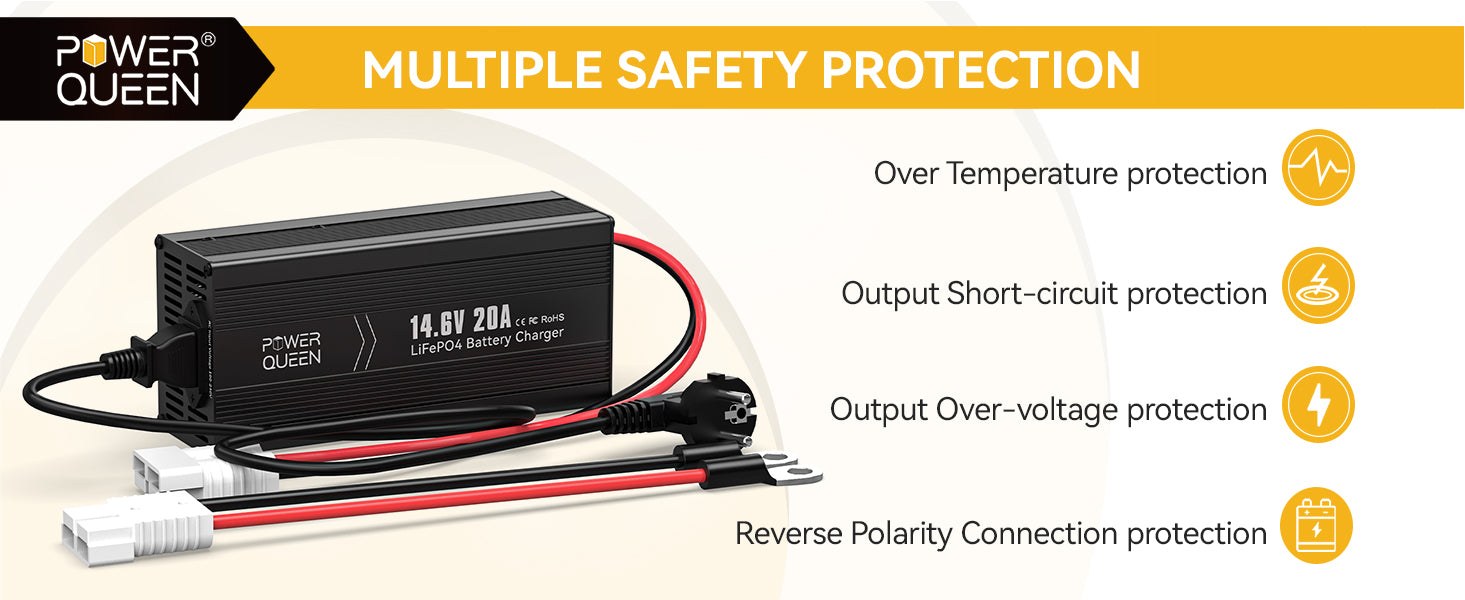
Cons: They may be more expensive than basic chargers, and some models may require a learning curve to understand their features and settings.
10.5 Wind-Powered Chargers:
Pros: Wind-powered chargers harness wind energy to charge batteries, providing an environmentally friendly option for marine applications.
Cons: They are highly dependent on wind conditions and may not be as reliable as other charging methods.
10.6 Inverter Chargers:
Pros: Inverter chargers not only charge batteries but also convert DC power to AC power, offering a versatile power solution for boats with multiple energy needs.
Cons: They are typically more complex and expensive than standard chargers and may require professional installation.
Part 11. Common Mistakes to Avoid When Charging Trolling Motor Batteries
Charging trolling motor batteries is essential for maintaining their optimal performance and lifespan. However, common mistakes can damage the battery or reduce its efficiency. Here are some mistakes to avoid while charging trolling motor batteries:
Using the Wrong Charger:
Always use a compatible charger designed for your battery type to avoid damage or shortening its lifespan. Related reading: Can I charge a LiFePO4 battery with a normal lead acid charger?
Overcharging:
Overcharging the battery can reduce its capacity and lifespan. Monitor the charging process and turn off the charger once the battery is fully charged.
Undercharging:
Undercharging the battery can cause sulfation buildup and reduce its capacity. Always fully charge the battery after each use to avoid undercharging.
Charging in Extreme Temperatures:
Avoid charging the battery in direct sunlight or extreme temperatures, as it may overheat and cause damage.
Ignoring Safety Precautions:
Charging batteries can be dangerous. Always wear protective gloves and safety glasses, and ensure the area around the battery and charger is well-ventilated to prevent the buildup of noxious fumes.
Part 12. FAQs about Trolling Motor Batteries
1. Can I charge my trolling motor battery with my outboard?
When it comes to recharging your trolling motor battery, you have several options depending on your specific needs. One option is to use a regulator/retainer or a battery combiner with your outboard motor to recharge the battery. Another option is to utilize an onboard charging system or a trickle charger. Additionally, you can consider using a solar panel as an eco-friendly and cost-effective solution for recharging your trolling motor battery.
2. How often should you charge a battery in storage?
About every three months, check the voltage of each battery in storage. If the voltage is below 12.4 volts, slowly recharge it to full capacity.
3. Is it OK to leave boat battery on charger?
It's important not to leave your batteries connected to a charger throughout the winter, as this could cause damage and pose a safety risk. After charging, the batteries should retain their charge through their self-discharge rate until at least June.
4. Can I charge a marine battery inside?
In general, charge your battery at temperatures between 50 and 86 degrees Fahrenheit, which often means it's best to charge them indoors.
Part 13. Upgrading Deep Cycle Marine Batteries to Lithium for Better Performance
Here are some reasons why you should make the switch. Explore Power Queen Marine/ Trolling Motor Batteries series to select the ideal one.
13.1 LiFePO4 batteries are more efficient
LiFePO4 lithium batteries offer a higher energy density compared to traditional lead-acid batteries, allowing them to store more energy in a smaller space. This increased efficiency provides longer run times for your trolling motor, so you can spend more time on the water without worrying about the battery running out of power.
13.2 LiFePO4 batteries last longer
A major benefit of LiFePO4 batteries is their impressive longevity. They can last up to 10 times longer than traditional lead-acid batteries. As a result, you'll need to replace your trolling motor battery less frequently, which translates to significant savings in both time and money over the long term.
13.3 LiFePO4 batteries are safer
Lead-acid batteries contain harmful chemicals that pose risks to both the environment and your health. On the other hand, LiFePO4 batteries are a much safer and eco-friendly alternative. They lack toxic chemicals and heavy metals, making them a better choice for both environmental protection and personal safety.
13.4 LiFePO4 batteries are more reliable
LiFePO4 batteries offer greater reliability compared to traditional lead-acid batteries. They feature a significantly lower self-discharge rate, allowing them to maintain their charge for extended periods. This makes them perfect for trolling motors, as you can leave them unused for longer durations without the concern of losing their charge.
13.5 LiFePO4 batteries are more convenient
LiFePO4 batteries offer greater convenience compared to traditional lead-acid batteries. They are lighter and more compact, making them easier to transport and install. Additionally, they require less maintenance since they don't need to be topped off with water like lead-acid batteries.
In summary, if you’re looking for a more efficient, reliable, and eco-friendly trolling motor battery, consider switching to a LiFePO4 battery. Although the initial cost is higher, their longer lifespan and lower maintenance needs make them a cost-effective choice over time. For guidance on choosing the right battery type and size for your trolling motor, check out the recommendations below.
| Voltage of Motor | Motor Thrust | Recommended Max Amp of Batteries | Recommended Power Queen LiFePO4 Batteries | Recommended Reasons |
|---|---|---|---|---|
| 12V | 20 ~ 30 lb | 50A | Power Queen 12V 50Ah Lithium Battery | Cost-effective |
| 12V | 30 ~ 70 lb | 100A | Power Queen 12V 100Ah Lithium Battery | Cost-effective, Low-temp, Lighter |
| 24V | 70 ~ 100 lb | 100A | Power Queen 24V 100Ah Lithium Battery | Cost-effective |
| 36V | 100 ~ 120 lb | 100A | 3* Power Queen 12V 100Ah Lithium Battery | 3 batteries in series |
Part 14. Conclusion
Properly charging your trolling motor battery is crucial for maintaining its performance and prolonging its lifespan. By following this guideline, you can ensure that your battery is charged safely and efficiently, eliminating any power loss while out on the water.
Remember to consult your battery manufacturer's guidelines for specific charging requirements and always prioritize safety when handling batteries. With a well-charged trolling motor battery, you can enjoy a smooth and productive angling experience every time you hit the water.
